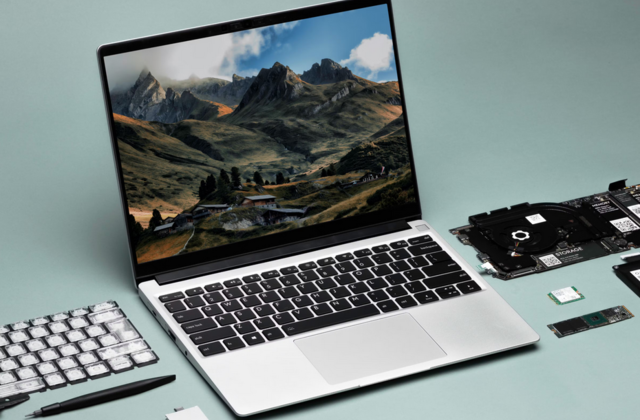What is it? Lumea is a hair removal device which uses Intense Pulsed Light (IPL) for long-term hair removal (Philips, 2020a). Lumea operates two co-existing business models: a traditional buy and a subscription model. The subscription model enables consumers to subscribe to a new product (or reprocessed, tested and repacked product) and allows them to purchase the device during the subscription period (Bocken, 2021).
Why is this important? The electronics and appliances sectors suffer from large and increasing levels of waste due to premature obsolescence, caused by issues such as lack of repairability and difficult access to spare parts (Bakker et al., 2020). Of the 53.6 Mt of electronic waste generated in 2019, only 17.4% were collected and recycled (Forti et al., 2020).
Main resource strategy: Slowing the loop by making sure devices get used over and over through a subscription model, where the customer does not own, but has access to the device. After the subscription period, devices are returned, and may be reprocessed, tested and repacked for another use cycle. A subscription model also has the potential to reduce ‘regret purchases’ (Skelton & Allwood, 2017) as products may be returned more easily when they are not being used (or are not needed) anymore.
Other resource strategies: Closing the loop, potentially, if materials are recycled at the end of the product’s lifetime.
Business model aspects:
- Value Proposition: being hair-free with a long-term sustainable solution
- Value Creation & Delivery: a buy or subscription model via the Philips site. With subscription, customers can also decide to buy the product in the end. Upon cancelling the subscription, the device can be returned to Philips where it can be reprocessed and prepared for reuse.
- Value Capture: The subscription is available from about € 34.95 per month (Philips, 2020b). Philips thus gains revenues from the product over an extended subscription period.
Business model experimentation practices: In the early phases, interviews with customers were conducted, and service maps were created to map the service journey (Bocken, 2021). Later, a Minimum Viable Product (early version of the service) was trialed (Ries, 2011). After various iterations, Lumea subscription is now rolled out successfully in various markets (e.g. the Netherlands, the UK).
Tools, methods and approaches used: Design thinking techniques (e.g. service maps, interviews), Lean start-up type of experimentation (Ries, 2011), venturing approach with alpha and beta testing (see Bocken, 2021).
Sustainability outcomes: Philips estimates that the reprocessed Lumea proposition has a 40% reduced environmental impact compared to the base case, in particular thanks to savings in materials and manufacturing (Philips internal LCA study).
Sources:
Bocken, N. (2021). Circular Business Models – mapping experimentation in multinational firms. In: Kopnina, H.N., Poldner, K. (eds.) Circular economy: How value driven business can serve society. Routledge.
Philips. (2020a). Lumea Prestige. IPL device. Accessed 9 December 2020 at: https://www.philips.co.uk/c-e/pe/hair-removal/lumea-ipl.html
Philips (2020b). Lumea Try&Buy abonnement. Accessed 9 December 2020 at: https://www.philips.nl/c-m-pe/ontharing/lumea-try-and-buy#!
Ries, E. (2011). The lean startup. Penguin Books, London.
***
About project Circular X
Project Circular X is about ‘Experimentation with Circular Service Business Models’. It is an ambitious research project funded by the European Research Council (ERC) which supports top researchers from anywhere in the world. Project CIRCULAR X runs from 2020-2025. The project is led by Principal Investigator (PI) Prof Dr Nancy Bocken, who is joined by a multidisciplinary team of researchers at Maastricht Sustainability Institute (MSI), Maastricht School of Business and Economics, Maastricht University. The project cooperates with businesses who want to innovate towards the circular economy.
Project Circular X addresses a new and urgent issue: experimentation with circular service business models (CSBMs). Examples of such new business models include companies shifting from selling products to selling services and introducing lifelong warrantees to extend product lifetimes. However, CSBMs are far from mainstream and research focused on experimentation is little understood. The research aims to conduct interdisciplinary research with 4 objectives:
- Advancing understanding of CSBMs; their emergence and impacts
- Advancing knowledge on CSBM experimentation
- Developing CSBM experimentation tools
- Designing and deploying CSBM experimentation labs
Funding source
This project has received funding from the European Research Council (ERC) under the European Union’s Horizon 2020 research and innovation programme, grant agreement No. 850159.
Using of this information
When you refer to this case, please use the following source:
Circular X. (2021) Case study: Philips Lumea subscription. Accessed from www.circularx.eu



